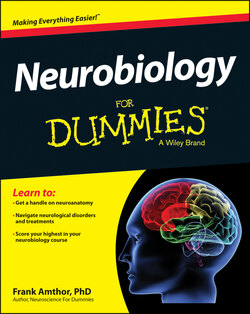Читать книгу Neurobiology For Dummies - Frank Amthor - Страница 61
Post-translational processing
ОглавлениеWhen proteins are created by ribosomes that translate the mRNA into polypeptide chains, the amino acid polypeptide chains may undergo folding and/or cutting before becoming the final protein. The processes of folding and cutting often occur in the endoplasmic reticulum and may include structural changes based on the formation of disulfide bridges.
Also after translation happens, other biochemical functional groups may be attached to the amino acid sequence of the protein, such as carbohydrates, lipids, and phosphates. Adding phosphate groups is called phosphorylation. This is a common mechanism for activating or inactivating an enzyme protein.
Some of the amino acids on a polypeptide can be modified. For example, the amino acid arginine can enzymatically converted to citrulline in a process called citrullination. The presence of citrulline residues can alter the protein’s structure and thereby change its function. Vesicles containing secretory proteins and some neurotransmitters then pass through the Golgi apparatus, where additional post-translational modifications can occur.
Various enzymes may cut the peptide chain or remove amino acids from the amino end of the protein. Also, most polypeptides initially start with the amino acid methionine because the “start” codon on mRNA codes for it. Methionine is usually taken off during post-translational modification.
